Better keep yourself clean and bright; you are the window through which you must see the world.
George Bernard Shaw
As energy consumption and environmental consciousness continue to dictate our daily lives and activities, finding effective solutions to reduce energy usage has become a top priority. One of the easier ways to optimize energy efficiency in our homes, schools, or offices are energy efficient window shade options.
But how do we choose the kind of window covering or protection that fits our needs and budget? Let’s explore a range of innovative and energy-efficient window shade options, plus several practical insights and tips to enhance energy-saving efforts, all while enjoying the benefits of natural light and privacy.
The Need for Energy Efficient Window Shade Options

Both old and newly-built homes need energy-efficient window shades. According to the Department of Energy:
“…About 30% of a home’s heating energy is lost through windows. In cooling seasons, about 76% of sunlight that falls on standard double-pane windows enters to become heat.”
Adding window coverings and shades provide several benefits for the homeowner:
- Control glare and sunlight
- Control temperature (prevent heat loss during nighttime and in the winter season and excess solar heating during daytime and in the summer months)
- Lower energy bills (HVAC or A/C units won’t consume too much energy to regulate the home’s internal temperature)
- Reduce cold drafts
- Protect the homeowner’s privacy
- Improve overall comfort inside the home

Of course, the savings will vary depending on the kind of shade/covering and how it’s used, along with external factors like season and climate. It also depends on the kind of windows the house has: storm windows with multi-layer glazing or low-E coating are generally more effective at controlling heat loss or gain.
So, what are some energy efficient window shade options available on the market right now?
Interior Window Coverings and Attachments
Homeowners can install shades and coverings on both the interior and exterior side of their windows. For this section, here are some window attachments that go best inside the home:
1. Curtains and Drapes
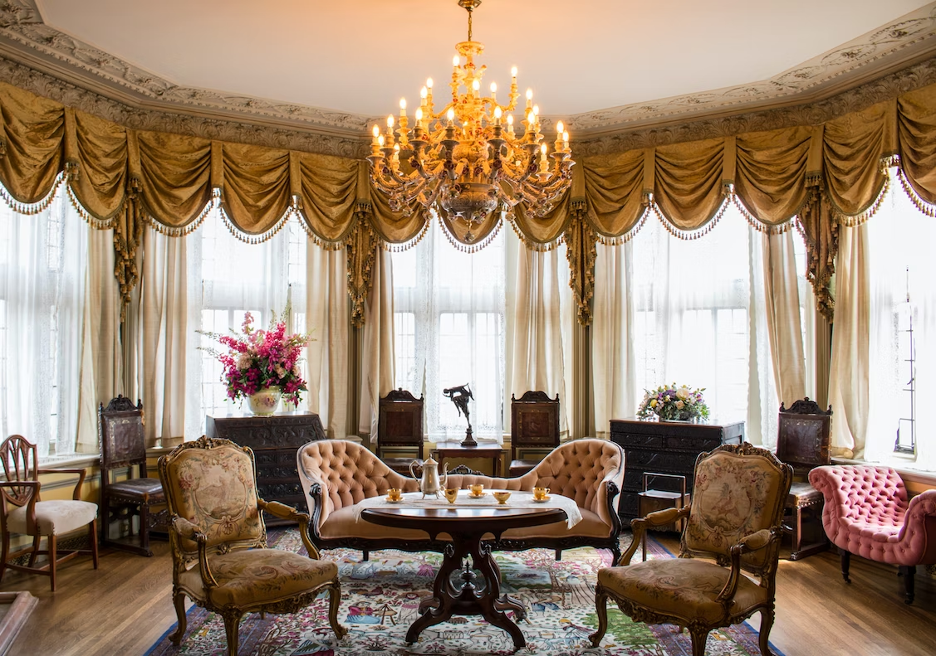
First off are the most common window coverings that one can install on their windows: curtains and drapes.
There isn’t necessarily a standard for their energy efficiency because of several factors, like the type of fabric used and even its color. Still, for most cases, draperies can reduce heat gains by up to 33% (during the summer months) and heat loss by up to 10% (in the winter seasons). For maximum effect, draperies should be hung as close as possible to the window, against the ceiling or with a cornice on top. Then, seal it with Velcro or magnetic tape on the sides, overlapping the fabric in the center.
2. Insulated Cellular Shades
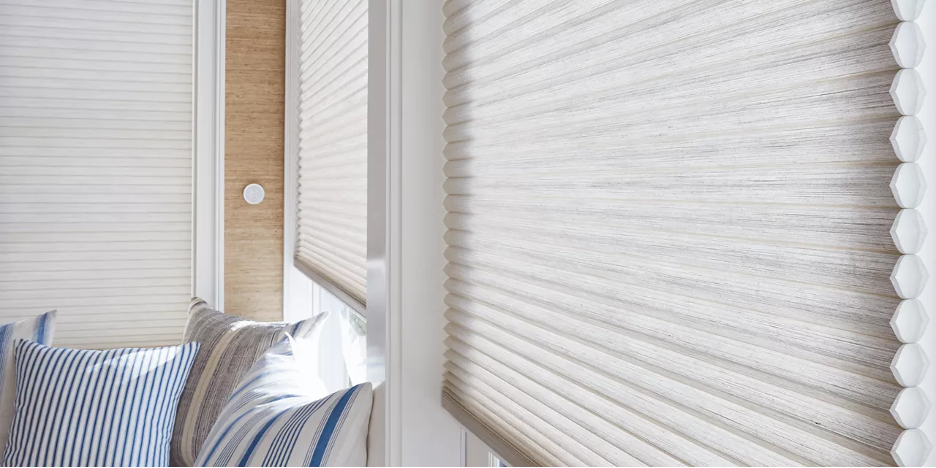
Window coverings and shades are rated for their R-values, which refers to the thermal resistance of the material used, and insulated cellular shades often have the highest R-values of most, if not all, window coverings. Made of pleated materials, they often fold up like an accordion to the top of the window, and contain air layers arranged like a honeycomb when viewed cross-section. These air pockets serve as insulators which reduces heat conduction, hence the high R-value.
Furthermore, the Dept. of Energy adds:
…In heating seasons, tightly installed cellular shades can reduce heat loss through windows by 40% or more, which equates to about 10% heating energy savings. In cooling seasons, cellular shades can reduce unwanted solar heat through windows by up to 60%, reducing the total solar gain to 20% when installed with a tight fit.
3. Roller and Roman Shades
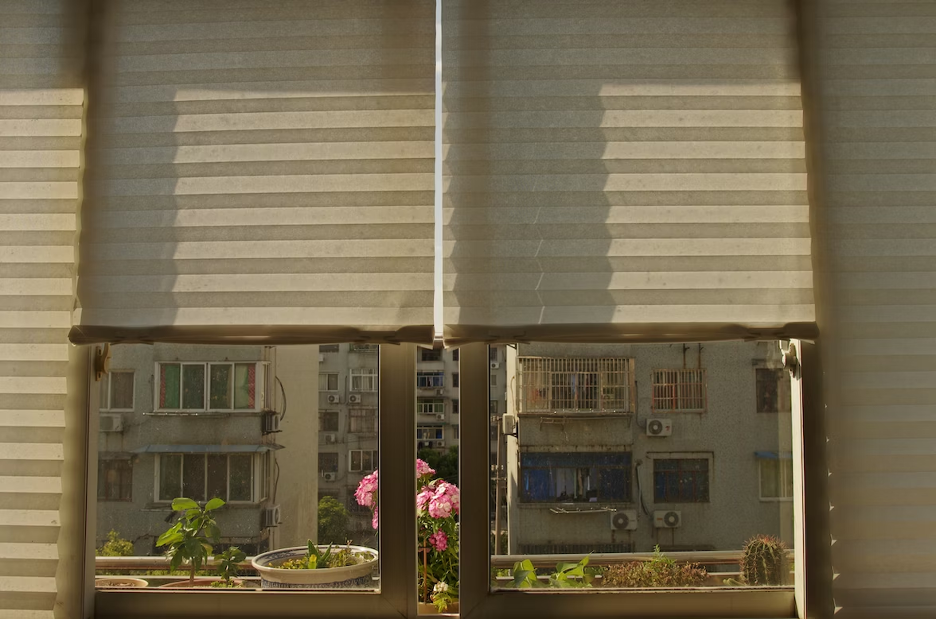
Roman and roller shades are variations of window covering that fit in a casing (a roller or the window casing itself), offering only a little insulation but highly effective at blocking sunlight and room darkening.
Roller shades, as the name suggests, raise into or lower from a roller bar attached to the top of a window. Roman shades, on the other hand, gather into neatly-stacked folds when raised.
4. Window Blinds
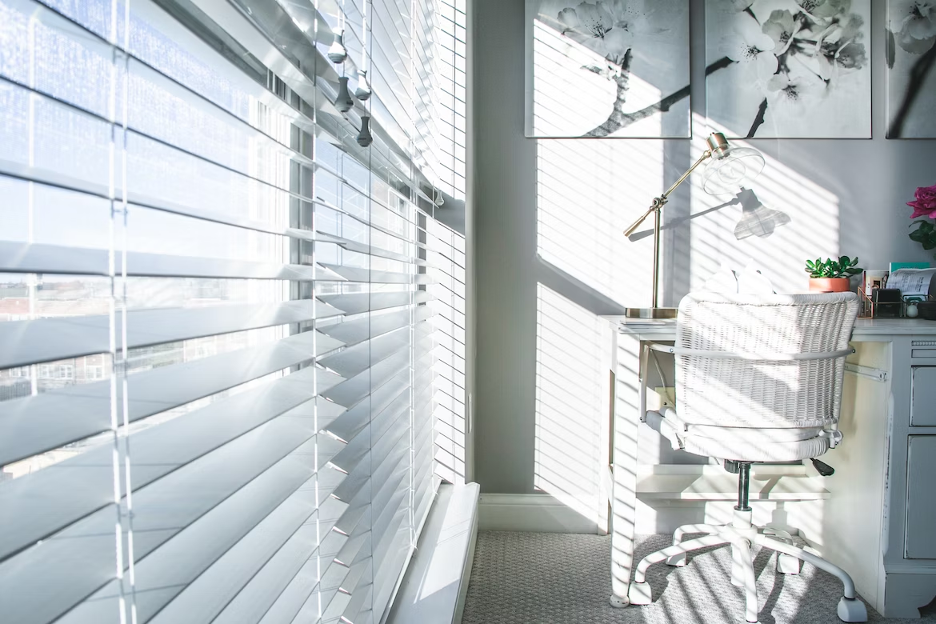
If maintaining daylight is the issue, then louvered blinds are a good solution. Both varieties—Venetian (with vertical slats) and louvered (horizontal slats)—allow more control with the natural light coming from the window while reducing glare and heat gain.
Highly reflective blinds are extremely helpful against heat gain, especially in the summer. Louvered blinds can also bounce off direct sunlight into a light-colored ceiling which helps take advantage of natural lighting. However, because of the amount of openings between the slats, it’s not as effective at keeping the heat in, so it’s not ideal for cold places or during the winter.
5. Window Films

Some homeowners don’t want to block the view from their windows, but it’s still a struggle to deal with glares and solar heat gain. For that, window films that block heat and UV rays will be extremely helpful, especially when you have furniture, carpets, or art pieces that might fade over time from UV exposure.
Typically, window films have three layers:
the adhesive layer applied to the glass,
the polyester film; and,
a scratch-resistant coating to protect the film.
Important note: make sure you’re using window films rated by the National Fenestration Rating Council (NFRC), an organization that also creates and certifies window labeling and ratings for consumers.
6. Window Quilts
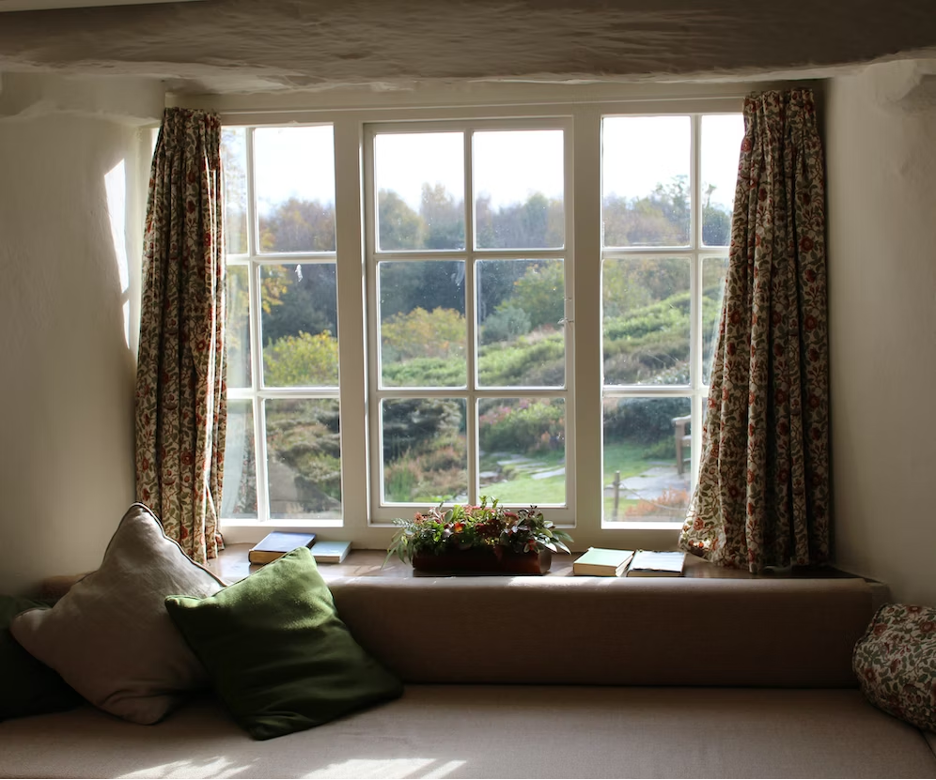
This attachment is made up of a sheet of quilted material that can roll/unroll either through tracks, snaps, or Velcro. They often have a similar R-value to cellular shades, especially when they’re installed in a snug fit. However, there’s a lot less control as to how much light they can let in compared to cellular shades, and they are often more complicated.
Exterior Window Protectors and Coverings
1. Awnings
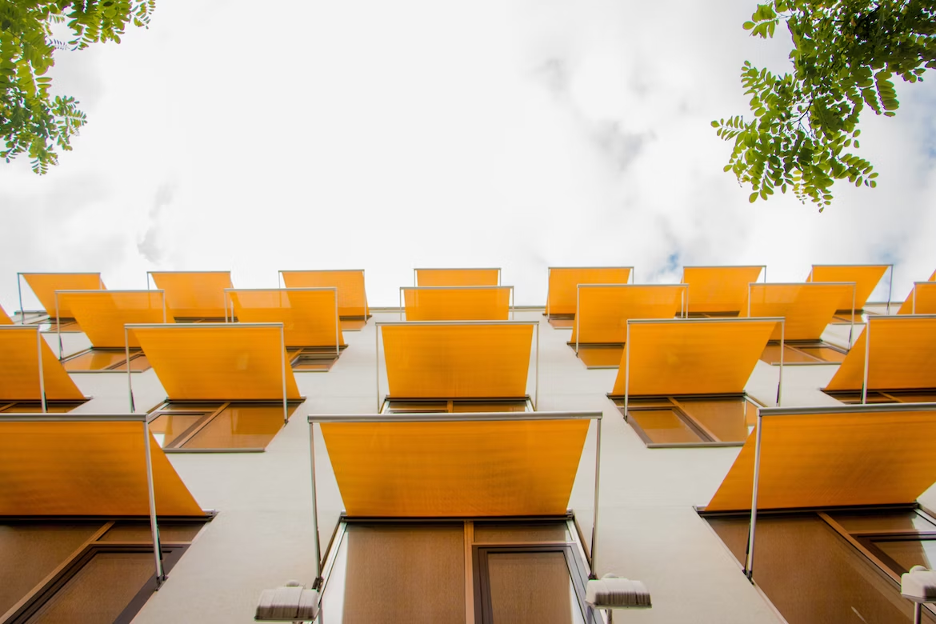
Even outside of the house, one can add elements that reduce heat and sunlight that directly hits the windows. This includes awnings, which are roof-like shelters that can either be retractable or fixed. It can provide shade for the window, or it can be built to cover other outdoor spaces, as well. According to information:
…Window awnings can reduce solar heat gain in the summer by up to 65% on south-facing windows and 77% on west-facing windows.
Awnings can be made from metal, canvas, and synthetic fabrics. Light-colored ones also reflect more sunlight. An important note, however: awnings can increase your heating bill, so it’s best to put them away or retract them during winter.
2. Exterior Shutters/Shades
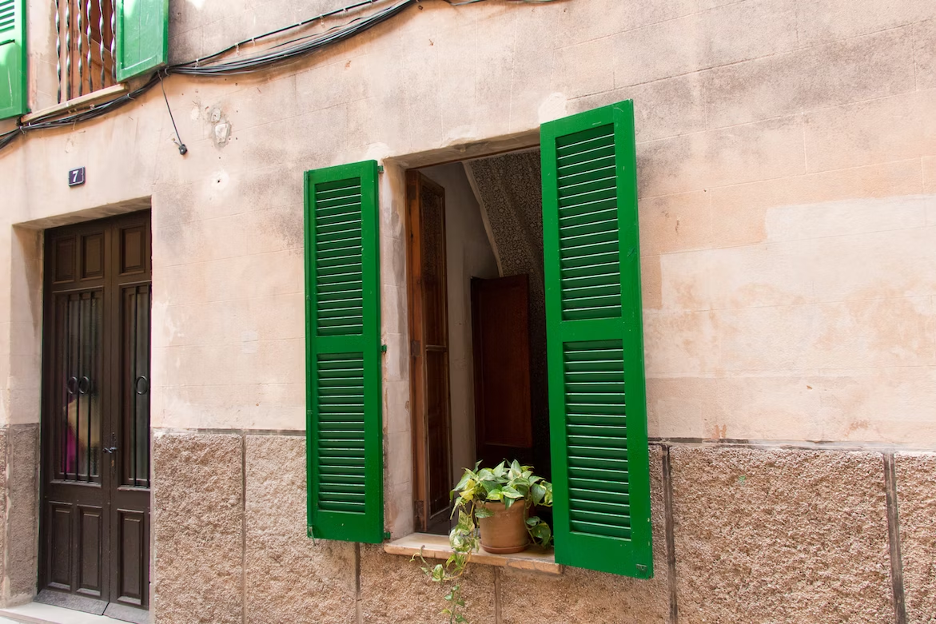
Shades and shutters can also be installed outside of the home, and it can be made from various materials like wood, aluminum, steel, fabric, or vinyl. They protect from solar heat gain, though the more openings they have for visibility, the lesser their protection from heat gain is.
Most of these exterior attachments can be controlled from within the home through a mechanical crank, a rod, or a motor. In some states, it’s even required as adherence to fire codes.
3. Solar Window Screens
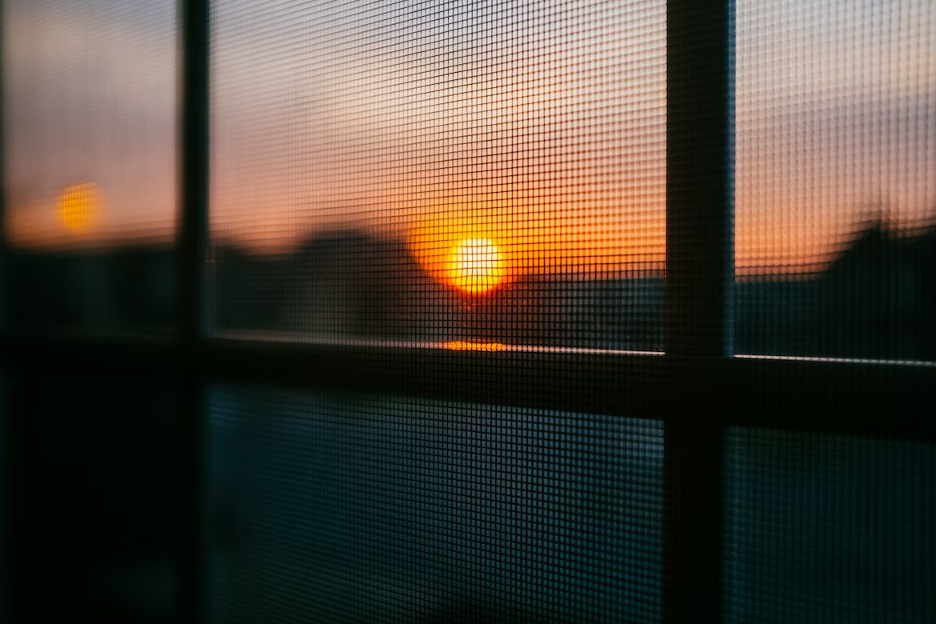
Most solar window screens may look similar to insect protection screens, but they help greatly reduce heat gain and glare and protect your interiors from UV damage. They can also be installed through rollers or fixed panels. Like exterior shades and shutters, they also vary depending on the amount of openings that allow increased visibility but reduce glare and heat gain protection.
***
Whether it’s the summer months or the winter season, having energy efficient window shade options can help you reduce the overall costs of maintaining your home. Moreover, they also add a touch of elegance to our living spaces and serve as a barrier against the sun’s scorching rays and help create a more comfortable indoor environment.
Speaking of a comfortable environment, check out these pre-loved items and furniture in The Local Flea. Find something that can add more luxury and comfort to your home at an affordable price!
Sources:
Energy Efficient Window Coverings – Department of Energy
Energy saving window coverings – Green Energy Efficient Homes
Energy Saving Window Treatments – Department of Design & Environmental Analysis; Cornell University
